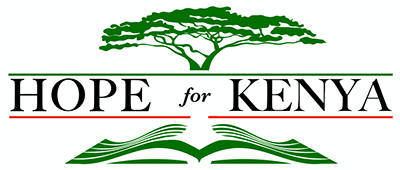Who Are We
1998: Humble, grassroot beginnings
In 1998, Peter Midodo and his wife Rachel lived in the slums of Awendo, Kenya. Everyday, they saw young children in the street around their house, not going to school. One day, they invited some of them in for a cup of porridge, and Rachel started teaching them how to read and write. The next day, the same children came back, with friends, and the next day, even more friends. Within six months, they had around 100 children coming every day.
2003: Peter visits the Adirondacks
In 2001, Peter came to the United States to study. In 2003, Peter met Derek Bevan, of Corinth, NY. He told him his story, shared his vision of helping children in need at the Joy Baby Complex. In May 2003, Peter told his story to some new friends, who would one day become Hope for Kenya, and requested help to buy some land to expand. They received $4,000. This sum combined with Peter & Rachel’s savings and other donations purchased the land on which he would eventually build the Joy Schools International in Ndhiwa. The Joy Schools International grew to serve 150 children from preschool to third grade.
2006: Hope for Kenya is created
In 2006, Peter visited the Adirondacks again, and showed the progress allowed by donations. Impressed with all the work, volunteers started Hope for Kenya, a US non-profit organization under Church of the Nations, dedicated to supporting the vision of creating hope for the children in the Ndhiwa community. Over the following years, they raised money to support the construction of many classrooms, water towers, and the drilling of wells for multiple schools that have served entire communities.
2009: First visit to Kenya
A group of volunteers visited the schools for the first time in 2009, and in increasing frequency, groups came back. Currently, two groups of 10 to 16 people visit every year, in February and June/July.
The first groups came to work on projects, like building desks, a dormitory, or a water well. Over time, though, the focus of the trips changed to interacting with students on a daily basis, in the classrooms, on the playgrounds, etc. These visits are now a cornerstone of Hope for Kenya: you are invited to come, experience the work yourself, and participate on the ground. Meeting the children, the staff, seeing what has been built, and what still needs to be built, fuels the organization.
2014-Present: The sponsorship program
By 2013, the Joy Schools International had expanded to approximately 300, more than half of which were boarding students. Until then, Hope for Kenya was raising money to fund construction & renovation projects. But in 2014, Hope for Kenya decided it was time to focus on individual students even more directly, and created a sponsorship program. During each visit since, interviews have taken place, and Philip, the team’s videographer, records the stories which are then posted on Hope for Kenya’s website. Sponsors can choose a child and start a personal connection with a student. As students graduated out of our partner primary schools, Hope for Kenya needed to find high schools that would allow and appreciate the sponsor-student relationship. Once identified Hope for Kenya built relationships with two high schools and now sponsors can continue to support and follow their student through high school, and college. In 2020, we expanded our outreach to those with disabilities. Now, with a partnership with the B.L. Tezza School for the Deaf we can give those who are even more vulnerable a chance at an education and a future.
First graduates
As of January 2019, over 350 sponsored students attend primary, high schools, and college. We were able to not only see our first high school graduates, but our first college graduates as well. These students are not only changing their own lives, but the lives of their communities and have brought hope to others like them through your help, and their persistence.
The Future...
What does the future bring for Hope For Kenya? We believe that continuing to serve those most in need is essential for impactful and lasting change. Recently, the new curriculum change has made us look at structurally how our schools can continue under strong leadership, guiding mentorship, and effective education. This means building dorms, classrooms, dining areas, and bathrooms at our current facilities to expand their reach. The Joy School International, our primary elementary school will now serve children in grades pre-school until ninth grade to meet the need of the “junior-secondary” school curriculum. At B.L. Tezza school for the Deaf we will be looking to drill a well, making it possible to create a safer environment from waterborne diseases, environmental dangers, and the unnecessary travel of more than two miles a day to get water. We will also be looking to build a classroom to expand from two classroom buildings that currently host pre-school to eighth grade. We have almost completed the Dago Community School now that the government has also assisted in building classrooms, which has been a huge blessing and we will continue our partnership with our secondary schools.





